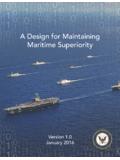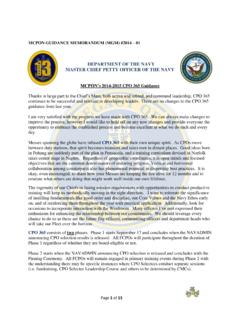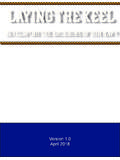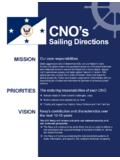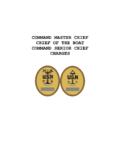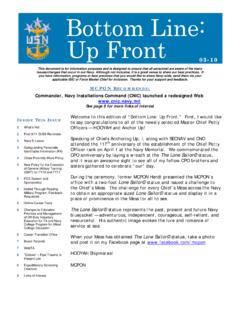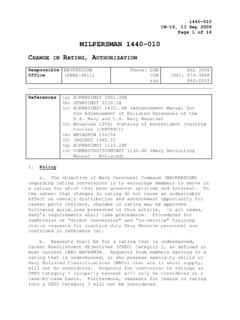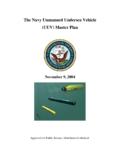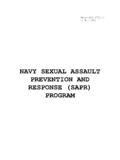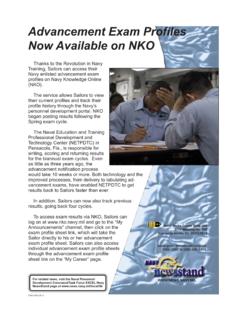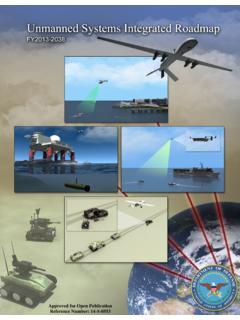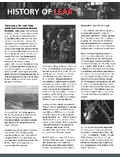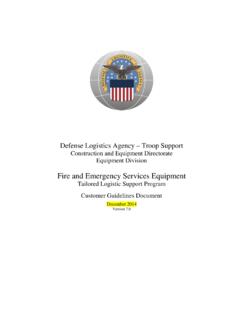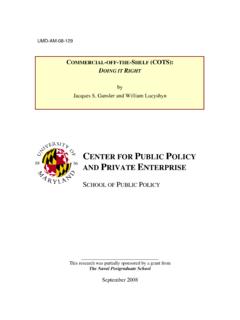Transcription of FORWARD ENGAGED READY A C trategy for 21st C
1 MARCH 2015 FORWARD ENGAGED READYA cooperative strategy for 21st Century SeapowerDRAFT/PRE-DECISIONAL - NOT FOR DISSEMINATION - 02 FEB A cooperative strategy FOR 21ST CENTURY SEAPOWER, MARCH 2015 [i] America s Sea Services the Navy, Marine Corps, and Coast Guard uniquely provide presence around the globe. During peacetime and times of conflict, across the full spectrum from supporting an ally with humanitarian assistance or disaster relief to deterring or defeating an adversary in kinetic action Sailors, Marines, and Coast Guardsmen are deployed at sea and in far-flung posts to be wherever we are needed, when we are needed. Coming from the sea, we get there sooner, stay there longer, bring everything we need with us, and we don t have to ask anyone s founders recognized the United States as a maritime nation and the importance of maritime forces, including in our Constitution the re-quirement that Congress maintain a Navy.
2 In today s dynamic security environment, with multiple challenges from state and non-state actors that are often fed by social disorder, political upheaval, and technological advancements, that requirement is even more prescient. The United States Navy, Marine Corps, and Coast Guard are our Nation s first line of defense, often far from our shores. As such, main-taining America s leadership role in the world requires our Nation s Sea Services to return to our maritime strategy on occasion and reassess our approach to shifting relationships and global responsibilities. This necessary review has affirmed our focus on providing presence around the world in order to ensure stability, build on our relationships with allies and partners, prevent wars, and provide our Nation s leaders with options in times of crisis. It has confirmed our continued commitment to main-tain the combat power necessary to deter potential adversaries and to fight and win when responsibility to the American people dictates an efficient use of our fiscal resources and an approach that adapts to the evolving security environment.
3 The adjustments made in this document do just that. Look-ing at how we support our people, build the right platforms, power them to achieve efficient global capability, and develop critical partnerships will be central to its successful execution and to providing that unique capability: [ii] FORWARD ENGAGED READY Seapower has been and will continue to be the critical foundation of national power and prosperity and international prestige for the United States of America. Our Sea Services will integrate with the rest of our national efforts, and those of our friends and allies. This revision to A cooperative strategy for 21st Century Seapower builds on the heritage and complementary capabilities of the Navy-Marine Corps-Coast Guard team to advance the prosperity and guarantee the security of our Nation. The demands of a changing world and the defense of the American people and our interests require nothing MABUSS ecretary of the Navy A cooperative strategy FOR 21ST CENTURY SEAPOWER, MARCH 2015 [iii] This maritime strategy describes how we will design, organize, and employ the Sea Services in support of our national, defense, and homeland security strategies.
4 It also sets maritime priorities in an era of constrained resources, while emphasizing warfighting capa-bilities and FORWARD naval presence to advance national interests today and guide preparations for tomorrow s challenges. FORWARD naval presence is essential to strengthening alliances and partnerships, providing the secure environment necessary for an open economic system based on the free flow of goods, protecting natural resources, promoting stability, deterring conflict, and responding to ag-gression. As global maritime commerce expands, populations increase, competition for energy and natural resources grows, and advanced mil-itary technologies proliferate across the oceans and through the littoral, so too will challenges arise for anyone operating in those regions. The American people will continue to rely on the Sea Services to respond to fast-changing and complex world events that threaten the security of the United States and our allies and partners.
5 Our Sailors, Marines, and Coast Guardsmen stand READY to meet these challenges with the same determination and responsiveness they have demon-strated for more than two centuries. FOREWORDJOSEPH F. DUNFORD, , Marine CorpsCommandant of the Marine CorpsJONATHAN W. GREENERTA dmiral, NavyChief of Naval OperationsPAUL F. ZUKUNFT Admiral, Coast GuardCommandant of the Coast GuardOur foremost priority remains the security of the American people, our territory, and our way of life. A cooperative strategy FOR 21ST CENTURY SEAPOWER, MARCH 2015 [v] Introduction ..1 Section I THE GLOBAL SECURITY ENVIRONMENT 3 Geopolitical Changes ..3 Military Challenges..8 Section II FORWARD PRESENCE AND PARTNERSHIP 9 Indo-Asia-Pacific..11 Middle East..13 Europe ..14 Africa ..16 Western Hemisphere.. 18 Arctic and Antarctic ..18 Section III SEAPOWER IN SUPPORT OF NATIONAL SECURITY 19 All Domain Access.
6 19 Deterrence ..22 Sea Control.. 22 Power Projection.. 24 Maritime Security ..26 Section IV FORCE DESIGN: BUILDING THE FUTURE FORCE 27 Flexible, Agile, and READY Forces.. 28 People.. 29 Concepts ..31 Capabilities.. 33 Conclusion .. 37 CONTENTSO ceans are the lifeblood of the interconnected global community, where seaborne trade is expected to double over the next 15 years. Our FORWARD naval forces support the free flow of commerce that has enabled unparalleled global economic growth over the last 70 years. Ninety percent of trade by volume travels across the oceans. Approximately 70 percent of the world s population lives within 100 miles of the coastline an area known as the littoral. Likewise, most maritime activity commercial shipping, fishing, and oil and gas extraction takes place within 200 miles of the shore. Above, a Japanese container ship arrives at the Port of Los Angeles.[Photo courtesy of the Port of Los Angeles] A cooperative strategy FOR 21ST CENTURY SEAPOWER, MARCH 2015 [1] INTRODUCTIONThe United States of America is a maritime nation.
7 For more than two centuries, the Navy, Marine Corps, and Coast Guard the Sea Services have operated throughout the world to protect Ameri-can citizens and defend interests by responding to crises and, when necessary, fighting and winning wars. Since we published A cooperative strategy for 21st Century Seapower in 2007, changes in the security and fiscal environments, along with new strategic guidance, including the 2012 Defense Strategic Guidance and the 2014 Quadrennial Defense and Homeland Security Reviews, mandate an updated maritime strategy to ensure that we continue to advance our national interests in an increas-ingly complex and interdependent and FORWARD -stationed naval forces use the global maritime commons as a medium of maneuver, assuring access to over-seas regions, defending key interests in those areas, protecting our citi-zens abroad, and preventing our adversaries from leveraging the world s oceans against us.
8 The ability to sustain operations in international waters far from our shores constitutes a distinct advantage for the United States a Western Hemisphere nation separated from many of its strategic interests by vast oceans. Maintaining this advantage in an interconnected global community that depends on the oceans remains an imperative for our Sea Services and the s global security environment is characterized by the rising importance of the Indo-Asia-Pacific region, the ongoing development and fielding of anti-access/area denial (A2/AD) capabilities that chal-lenge our global maritime access, continued threats from expanding and evolving terrorist and criminal networks, the increasing frequency and intensity of maritime territorial disputes, and threats to maritime com-merce, particularly the flow of energy. In addition to the risks emerging in this turbulent 21st Century, there are opportunities as well many facilitated by the Sea Services through routine and constructive engagement with allies and partners.
9 Chief among them is the potential for a global network of navies that brings together the contributions of like-minded nations and organizations around the world to address mutual maritime security challenges and respond to natural disasters.[2] FORWARD ENGAGED READY This maritime strategy reaffirms two foundational principles. First, FORWARD naval presence is essential to accomplishing the following naval missions derived from national guidance: defend the homeland, deter conflict, respond to crises, defeat aggression, protect the maritime commons, strengthen partnerships, and provide humanitarian assistance and disaster response. Our self-sustaining naval forces, operating in the global commons, ensure the protection of the homeland far from our shores, while providing the President with decision space and options to deny an adversary s objectives, preserve freedom of action, and assure access for follow-on forces.
10 Second, naval forces are stronger when we operate jointly and to-gether with allies and partners. Merging our individual capabilities and capacity produces a combined naval effect that is greater than the sum of its parts. By working together in formal and informal networks, we can address the threats to our mutual maritime security interests. Maximizing the robust capacity of this global network of navies concept, we are all better postured to face new and emerging challenges. The Sea Services have historically organized, trained, and equipped to perform four essential functions: deterrence, sea control, power projec-tion, and maritime security. Because access to the global commons is critical, this strategy in-troduces a fifth function: all domain access. This function assures appropriate freedom of action in any domain the sea, air, land, space, and cyber- space, as well as in the electromagnetic (EM) spectrum.
